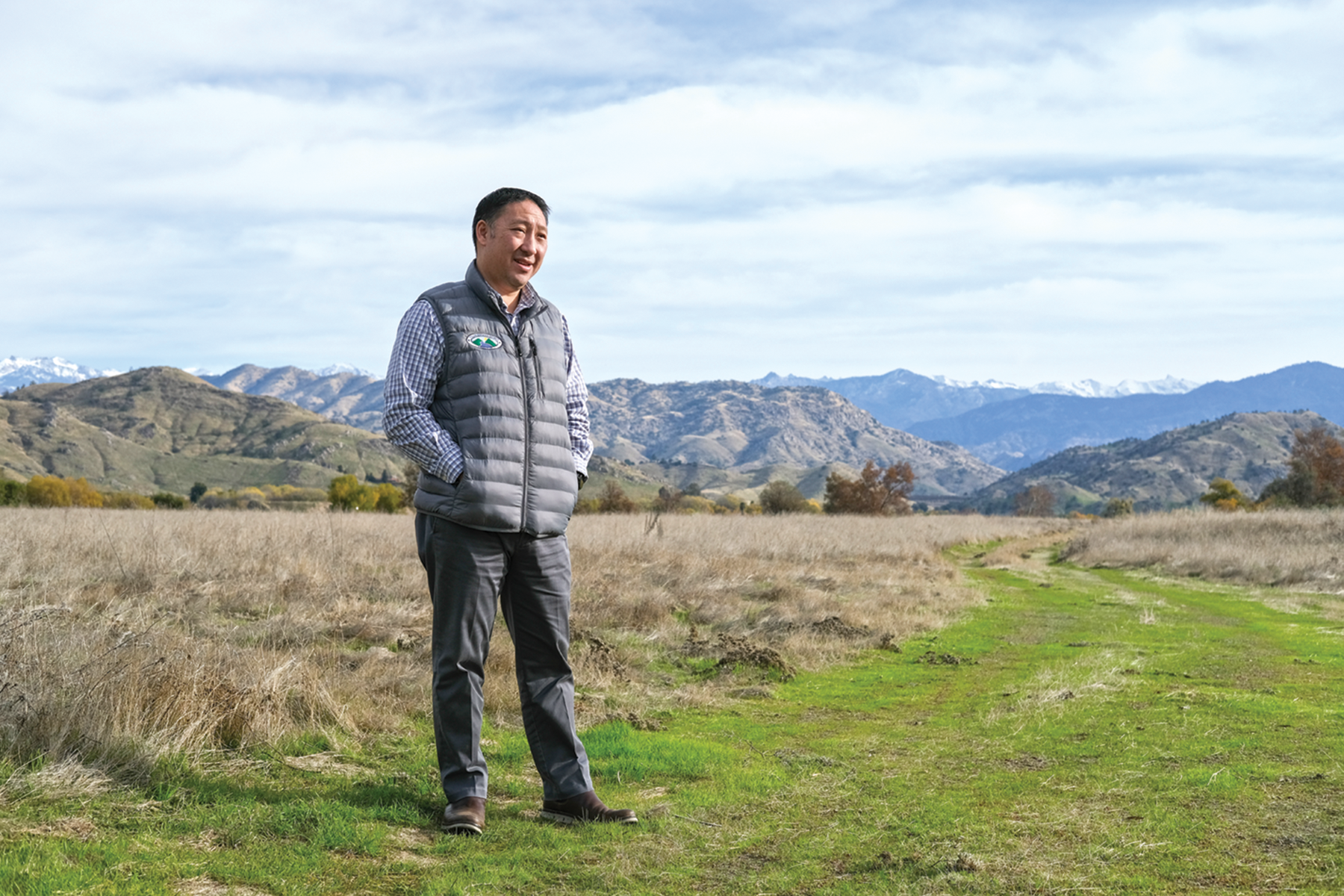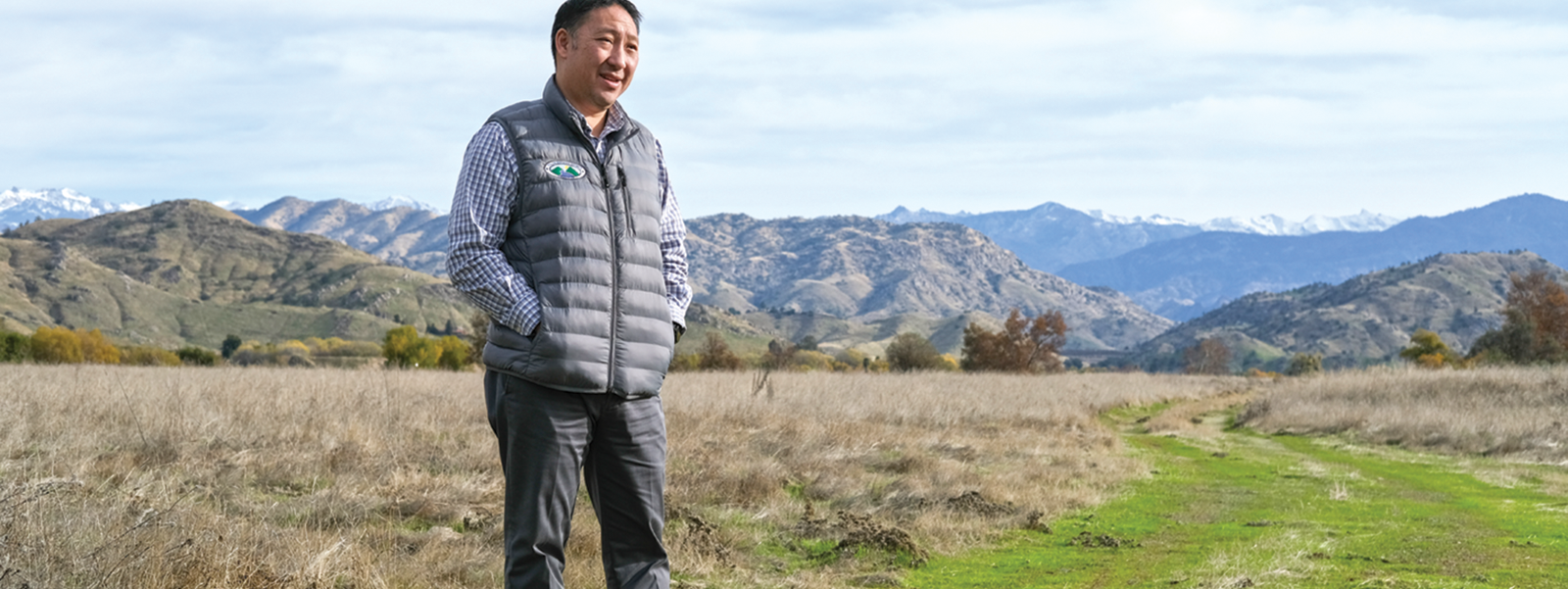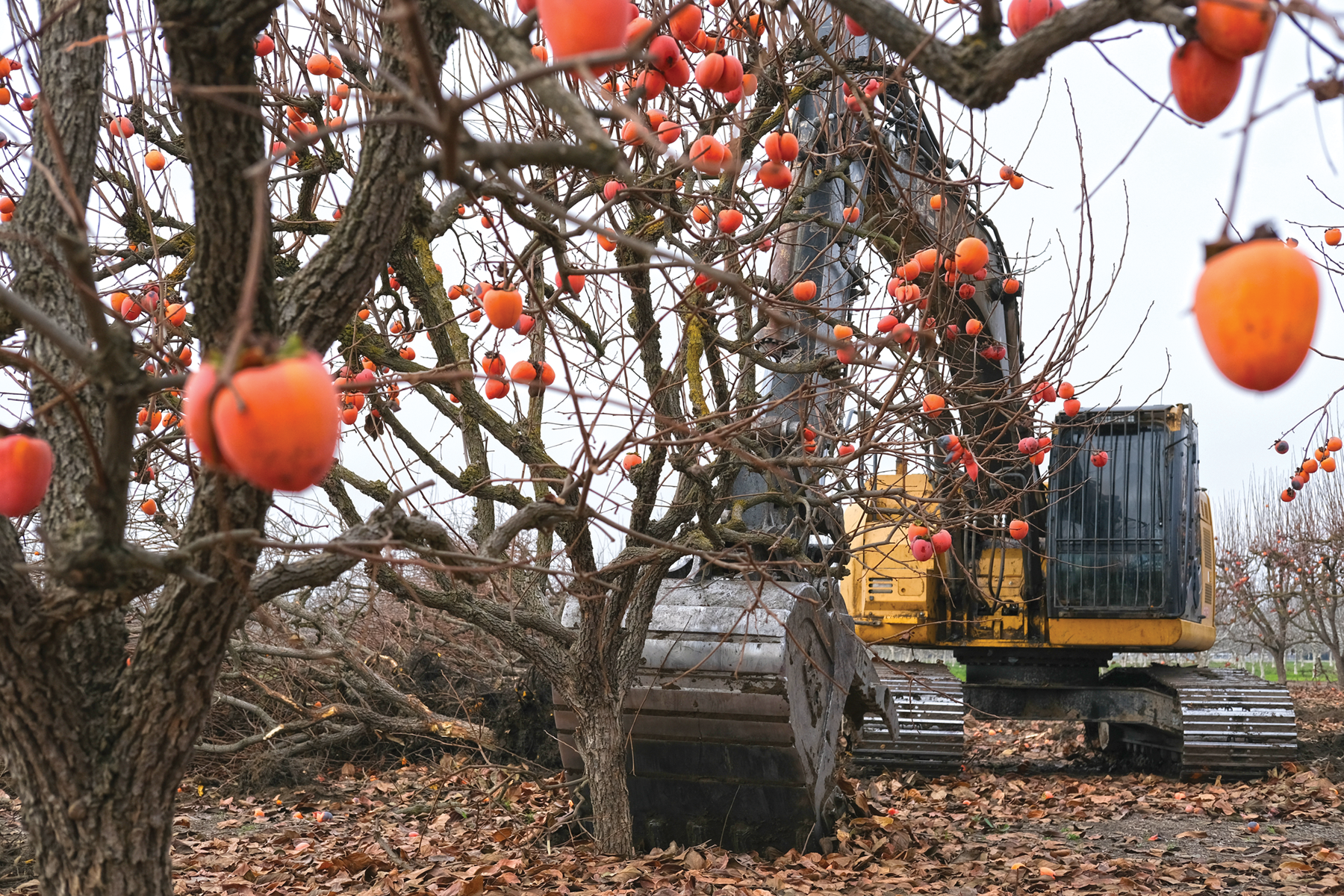On the Record: Aaron Fukuda talks SGMA in the Kaweah Subbasin

Aaron Fukuda, general manager of the Tulare Irrigation District and interim general manager of the Mid-Kaweah Groundwater Sustainability Agency, surveys the site of a planned TID reservoir at McKay Point.
Photo/Caleb Hampton

RELATED COVERAGE: Read a feature article about how farmers in the Kaweah Subbasin are adapting to California's Sustainable Groundwater Management Act.
Aaron Fukuda is general manager of the Tulare Irrigation District and interim general manager of the Mid-Kaweah Groundwater Sustainability Agency. Fukuda spoke with Ag Alert® last month at the irrigation district office in Tulare and during a tour of farms and water projects in the Kaweah Subbasin. The below conversation was edited for length and clarity.
Can you give an overview of agriculture in the Kaweah Subbasin?
This area used to grow mostly cotton and other field crops. In the ‘80s and ‘90s, we went away from cotton and went into dairying and tree crops. Now, we’re largely a dairy industry. Intermixed in there are lots of almonds, pistachios and walnuts, and citrus on the east side.
Researchers have projected the Sustainable Groundwater Management Act could result in a fifth of the San Joaquin Valley’s farmland going fallow by 2040. What’s at stake for farms and communities in your region?
Around the time SGMA was adopted, my son was born. I told people, “I think I’m going to have a hard time finding a sponsor for my kid’s Little League team.” When you look at the uniforms, it doesn’t say Google or Apple. It says Linder Equipment or Case. It’s our local ag companies. Ag is the foundation of our communities. If you turn the dial back too hard, bad things could happen, and the first thing to go is the discretionary dollars.
What is your job as a groundwater sustainability agency manager?
My job is to shepherd us through the path to groundwater sustainability, including our interactions with the Department of Water Resources and the State Water Resources Control Board.
How have you worked with farmers in your GSA?
It’s been a ground-up movement where the growers came to the GSA and worked with us to put this sustainability path together. They told me, “We can’t wait for sustainability. We need to accelerate to sustainability today.” Otherwise, if you’re standing on a cliff and someone pushes you, you’re going over. They’ve shown a commitment to do this because they see the future they are planning for themselves. We’ve also stitched ourselves together with the cities of Visalia and Tulare, because those cities recognize that we’re an agricultural community. That means we’re all in this together.

Photo/Caleb Hampton
Kaweah was the first subbasin to have a probation hearing canceled. How did you do it?
I think it was the sweat equity and the decision-making of the three GSAs in the Kaweah Subbasin. We hired a suite of consultants to come help us. We set aggressive deadlines for the various reports we needed. There was yelling. People were like, “This is ridiculous.” Everybody was pitching in on nights, weekends, whenever. It was nonstop for two years.
What deficiencies did DWR find in your initial groundwater sustainability plan?
They told us, “You need to work on your groundwater levels and subsidence and water quality.” Well, that’s pretty much everything. A big thing was we needed to reset our minimum thresholds—the groundwater levels that can trigger undesirable results—to better protect shallow household wells.
How does your new plan ensure groundwater levels don’t reach that threshold?
Our first approach had been to lead with groundwater recharge and surface water storage projects, adding supplies to our system, and to make up the shortfall with demand management. But we started in drought, and we found that by the time we realized what our shortfall was, it was probably too late to make up for it. In our new plan, we flipped it. We are leading with demand management. We have set groundwater allocations for growers to put a buffer between our groundwater levels and the minimum thresholds.
What farming impacts have you seen as growers adapt to SGMA?
In 2022, we implemented our allocation system for the first time during a drought. Our groundwater use went down by 13%, and a lot of that was by fallowing. Everything around here used to be planted wall to wall pretty much year-round. Now, you’re seeing fields left open. I think our dairies have reduced their herd sizes a little. Some trees have come out. My biggest concern is consolidation. We’re seeing some of the smaller guys call it quits. With SGMA, you need to have a lot of acreage to balance things out.
You’re potentially off probation. What happens now?
It’s game time. We’re not about to give up now. We have potentially avoided probation. Now, we have to do all this stuff.




